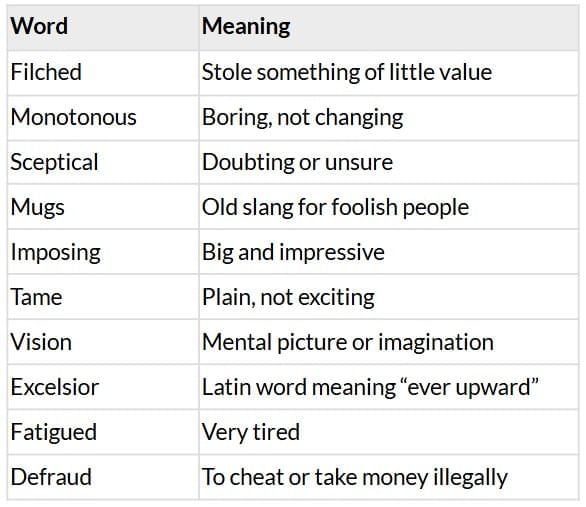The M.C.C. Chapter Notes | Gul Mohar Class 7: Book Solutions, Summaries & Worksheets PDF Download
| Table of contents |

|
| About the Author |

|
| Detailed Summary |

|
| Moral / Message |

|
| Character Sketches |

|
| Vocabulary Table |

|
About the Author
Rasipuram Krishnaswami Iyer Narayanaswami, known as R. K. Narayan, was a famous Indian writer. He wrote simple and humorous stories mostly set in the fictional town of Malgudi. His first novel Swami and Friends (1930) is based on childhood experiences and is loved by readers of all ages.
Detailed Summary
The chapter “The M.C.C.” from Swami and Friends shows the excitement and imagination of childhood. Swaminathan and his friend Rajam decide to form their own cricket team. Swami is doubtful at first, as he has never really thought of himself as a player. He knows the names of famous cricketers like Hobbs, Bradman, and Duleep, and even collects their pictures, but he secretly finds them monotonous. When Rajam admits that he too does not know how to play, Swami feels reassured. This shows the deep trust and comfort in their friendship.
The boys then focus on choosing a name for their team. Rajam suggests “M.C.C.,” which can cleverly stand for “Malgudi Cricket Club,” though Swami feels it is a little tame. Swami proposes fun names like “Friends Eleven” and “Jumping Stars,” which sparks Rajam’s imagination. Rajam even dreams of a newspaper headline announcing the victory of “The Jumping Stars.” Together, they make a long list of possible names.
Swami’s curious and slightly anxious nature soon takes over. He wonders if their team will need to pay taxes to the government, and worries about problems of recognition and duplicate names. Rajam, who thought forming a team would be simple, now realizes that it may be more complicated than expected. Despite these worries, the boys remain excited and hopeful. The chapter highlights their playful creativity, their loyalty as friends, and the innocent way children view the adult world through imagination.
Moral / Message
- The story highlights the innocence and creativity of childhood.
- It shows how children view the world with both excitement and worry, turning small plans into big adventures.
- It also teaches us the value of friendship, teamwork, and how imagination makes life more fun and meaningful.
Character Sketches
Swaminathan (Swami):
Swami is cheerful, imaginative, and talkative. He often worries too much, like about taxes or rules, but this shows his curious and thoughtful mind. He enjoys sharing ideas and values his friends’ opinions, making him a lovable character.
Rajam:
Rajam is confident, enthusiastic, and a natural leader. He encourages Swami to join in and helps plan their cricket team. Though practical, he also enjoys dreaming big, like imagining newspaper headlines. His balance of confidence and creativity makes him stand out.
Vocabulary Table

|
28 videos|56 docs|17 tests
|
FAQs on The M.C.C. Chapter Notes - Gul Mohar Class 7: Book Solutions, Summaries & Worksheets
| 1. What is the main theme of the article "The M.C.C. Class 7"? |  |
| 2. Who are the key characters in "The M.C.C. Class 7," and what are their traits? |  |
| 3. What moral lessons can be drawn from the experiences shared in "The M.C.C. Class 7"? |  |
| 4. How does the article "The M.C.C. Class 7" illustrate the concept of teamwork among students? |  |
| 5. What vocabulary words are significant in understanding the context of "The M.C.C. Class 7"? |  |















